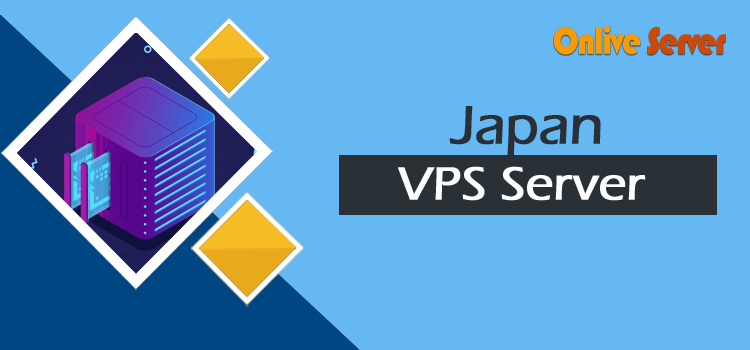
The number of people who are utilizing the web continues to grow every year, so more and more businesses are moving their operations online to give them greater reach to customers around the world. However, running an online business also means that you need to host your website and/or applications somewhere on the internet – after all, nobody wants to visit a website that has been shut down due to lack of bandwidth or computing power! Setting up your own server at home can be relatively cheap and easy, but it does take some time and technical know-how that most companies don’t have on hand. We will take a look at Japan VPS Server by Onlive Server-
Introduction to the guide
A few years ago, people began to embrace VPS as a way to help businesses grow. A lot of hosting companies make their mark on other providers by offering support and making adjustments based on user feedback. In that sense, it’s always helpful to share experiences with products and services so you can best accommodate those who have yet to try something new. That’s why we’re here today—to talk about some unique aspects of Japan VPS Server that make them ideal when seeking out virtual private servers. So sit back, grab a drink and start reading our guide on why Japanese Virtual Private Servers are a sound choice for anyone looking into purchasing one of these servers!
Choosing a hosting provider
The selection of a hosting provider is an important part of how to start a website. This is because it provides you with a location to host your site, and therefore must be highly reliable and offer adequate functionality. A good hosting provider will provide you with everything that you need to get started with developing or redesigning your website, including sufficient space, bandwidth, and e-mail accounts. Once your site goes live and starts receiving visitors, having an adequate amount of data transfer per month can ensure that enough content can be downloaded from your server in order to accommodate all of its viewers. This guide will teach you how to choose a web hosting provider that’s right for you.
Setting up the server
This can be a rather difficult and time-consuming task if you do not have any technical experience. However, setting up a server doesn’t have to be that complicated, especially with proper planning. First, make sure you know exactly what your needs are and set requirements accordingly. Are there certain features you need right away or could they wait until later on down the road? How many clients will you be serving at once? Remember, it’s easy to add hardware as needed in order to keep up with increased demand, but if you begin with too much power from day one without knowing how much of it will actually be used, then you’ll only waste money on underutilized resources.
Installing the OS (Operating System)
When you’re installing a VPS server, you’ll need to choose an operating system (OS). Popular choices include CentOS, Debian, and Ubuntu. Each has its own pros and cons, but there are also some considerations that are largely irrelevant. For example, neither Windows nor Mac can be installed on VPS servers. Ultimately though, the most important is that you pick an OS that works well with one of our server solutions. It’s very easy to change your OS at any time after purchasing a Virtual Private Server from us. Onlive Server offers both CentOS and Debian-based Linux distributions because they are tried-and-true solutions; many hosting providers use them exclusively.
Configuring Your Server
Whether you’re hosting a website, a game server, or both, there are two things that every site owner needs: reliability and speed. In any country, if your connection ever goes down, even for a minute, it could mean thousands of dollars in lost revenue. Also important is having a server that can handle high-traffic loads without slowing down. If someone lands on your homepage and you don’t have enough bandwidth to deliver their experience quickly enough, they’ll leave and never come back. Depending on what you plan to do with your new Virtual Private Server (VPS), it’s important to choose one that comes preconfigured properly from the start so you don’t waste time with unnecessary setup.
Basic Security Steps
No one wants to believe their web host will suffer a security breach that exposes sensitive information, but it happens. To help reduce risk, it’s good practice to change default passwords and usernames on all core services (such as SSH, FTP, and database), and encrypt data stored on your server with a software-based encryption tool such as TrueCrypt or BitLocker. It’s also important to make sure you’re running up-to-date firewall/anti-virus software at all times. Some servers also come with additional security features you can enable if you have the know-how; these include restricting root login via SSH, logging failed login attempts, and setting up HTTPS (also known as SSL) encryption from Apache or Nginx.
Special Features on Our Servers
Our servers have lots of special features that make them worth comparing to competitors. Below are some features we think our customers will be particularly interested in but don’t take our word for it! Check out these server-specific pages yourself: Onlive Server
Things to Do Next
Once you are sure that you’re using a reliable, secure Japan VPS Server hosting service, it’s time to start configuring things properly. A few essential steps include: Securing your Linux OS by installing fail2ban and ufw (this will prevent brute force attacks from disrupting your work); adding SSL to your websites; and enabling mod_rewrite in Apache. And don’t forget about backups! This should all be done by following a guide or tutorial that fits with whatever operating system you are using. Once you get familiar with Linux administration and get used to using root privileges via sudo, it won’t be difficult at all to keep everything up-to-date with security patches.
